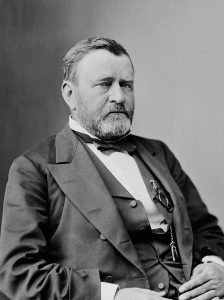Posted By RichC on March 18, 2025
After the January inauguration of President Trump and the confirmation of his cabinet, there was an immediate change to trade policies that included tariffs … often viewed as protectionist or at minimum leveling and reshaping the  relationships with key trading partners. This month the U.S. levied 25% tariffs on steel and aluminum imports from Canada, Mexico, the European Union (EU), Japan, South Korea, and the United Kingdom, citing national security concerns tied steel being produced in other countries. For years the U.S. has increasingly relied more and more on importing steel (and aluminum). More and more manufacturing, be it microchips, high tech assembly or pharmaceuticals has been offshored to Asia, so tariffs on all Chinese imports were increased to 20% on the 4th of March, heightening tensions with China, the world’s second-largest economy.
relationships with key trading partners. This month the U.S. levied 25% tariffs on steel and aluminum imports from Canada, Mexico, the European Union (EU), Japan, South Korea, and the United Kingdom, citing national security concerns tied steel being produced in other countries. For years the U.S. has increasingly relied more and more on importing steel (and aluminum). More and more manufacturing, be it microchips, high tech assembly or pharmaceuticals has been offshored to Asia, so tariffs on all Chinese imports were increased to 20% on the 4th of March, heightening tensions with China, the world’s second-largest economy.
Trading partners responded swiftly. Canada imposed retaliatory tariffs amounting to $29.8 billion on U.S. goods, including steel, aluminum, and consumer products. The EU adopted a phased approach, reinstating €8 billion in tariffs by April 1, followed by an additional €18 billion by mid-April, targeting U.S. industrial and agricultural exports. China countered with tariffs of up to 15% on U.S. agricultural exports and introduced export controls on critical minerals. Meanwhile, Mexico, Japan, South Korea, and the UK have prioritized diplomatic negotiations, delaying immediate retaliation in favor of seeking exemptions or resolutions.
The current escalation builds on longstanding grievances over unfair trade practices by U.S. trading partners. China has frequently been accused of intellectual property theft, forced technology transfers, and currency manipulation, practices that have undermined U.S. competitiveness and fueled bilateral trade disputes. The European Union has faced criticism for its substantial agricultural subsidies, which distort global markets and place U.S. farmers at a disadvantage. Similarly, Japan and South Korea have historically imposed high tariffs and non-tariff barriers, particularly in their agriculture and automotive sectors, restricting U.S. market access and contributing to trade imbalances. These practices have shaped U.S. policymakers’ decisions to adopt a more protectionist stance, aiming to rectify perceived inequities in global trade.
The positive for the U.S. is that we’ve seen several companies swiftly changing plans to commit to investing in America and have turned from building overseas or in Mexico. This kind of reaction is likely the reason the president reached for “tariffs as a stick” verses the slow, cumbersome trade negotiations of the past that take years — and haven’t benefited middle class workers; we may have seen low prices on imports, but fewer good paying jobs.
As Americans, we can only hope this hardnose tactic works to our favor and that trading partners recognize the unfair trading imbalance they have had for years? Likely there will be significant challenges ahead, including supply chain disruptions and rising costs for businesses, alongside broader implications for economic growth and international relations. While U.S.-UK trade talks offer a potential avenue for de-escalation, the risk of further tariff conflicts looms large. Personally I think it might be prudent to prepare for a challenging year and a slowing economy. We can only hope our political leaders rethink what is best for all countries and their citizens, before world slips into a recession, but I’m not holding my breath.
Category: Advice, Business, Misc, Politics |
0 Comments
Tags: commentary, economy, markets, Politics, recession, tariffs, thoughts, trade
 From our local economic development office, a new Wawa convenient store will open on April 16, 2025:
From our local economic development office, a new Wawa convenient store will open on April 16, 2025:















